Eek! Unless it’s Halloween, most people typically don’t enjoy seeing spiders around their house. Spiders play an important part in our ecosystem, helping control the insect population by eating aphids, beetles, caterpillars, and mosquitoes. Spiders are also food for animals like birds, lizards, frogs, and small mammals, but they can still be pretty creepy-looking! Besides their scary appearance, are there any spiders in Florida that are dangerous? Let’s review the most common spiders here in Florida from least harmful to most dangerous!
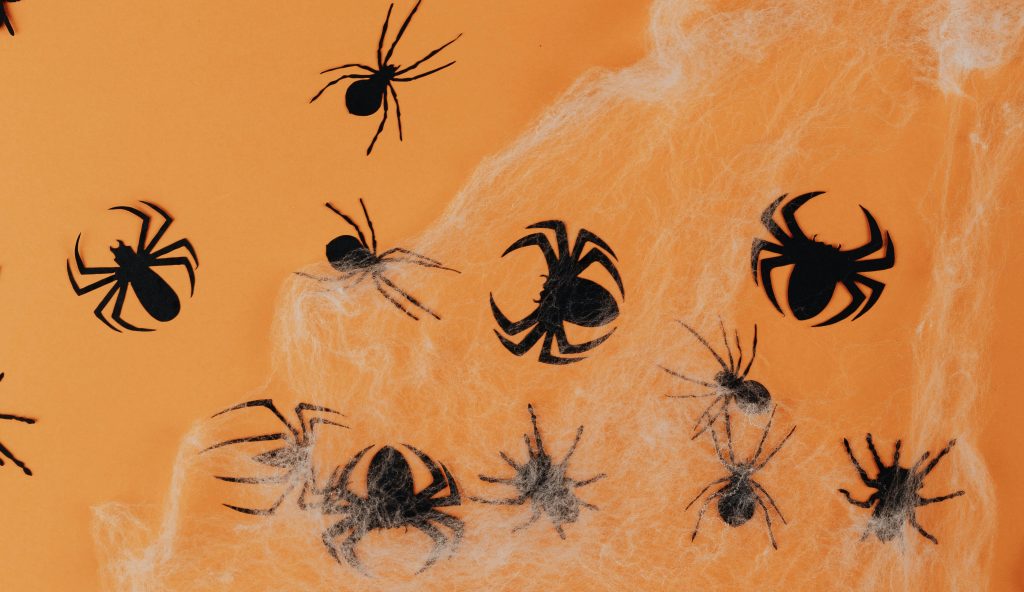
Quick disclaimer!
If you are bitten by ANY spider, it is always recommended that you obtain the spider for identification and seek medical advice and treatment as soon as possible.
Least Dangerous Spiders
The good news: Most spiders that you’ll come across in Florida are not dangerous or destructive. If you find a spider in your home, either leave it be or carefully trap it and release it outside. If you consistently have a problem with spiders or insects in your house, do an interior and exterior check of your home for cracks and openings, or call a pest control professional to perform an inspection.
Some common harmless spiders include:
Daddy long-legs: Oh, daddy! These are some of the most common and recognizable spiders here in Florida for their creepy long legs. Adults will come out in the evening in search of food but are mostly inactive during the day. They feed on insects and other spiders and love sweet vegetable juices. You’re most likely to find them on tree trunks, windowsills, and damp spaces like garages or basements.
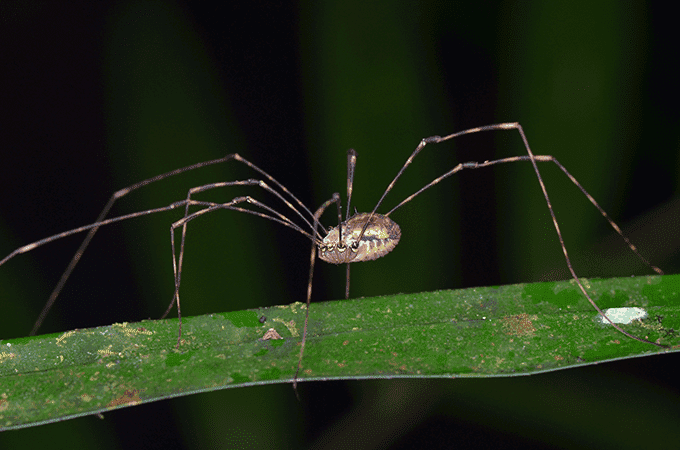
Orbweaver spider: These spiders are a very unique oval shape with red and black markings. They are sometimes referred to as crab spiders because of their crab-like shape. They are most active between October and January and are most commonly found outside in citrus groves or woods where they catch small insects in their intricate webs. They rarely bite unless handled roughly.
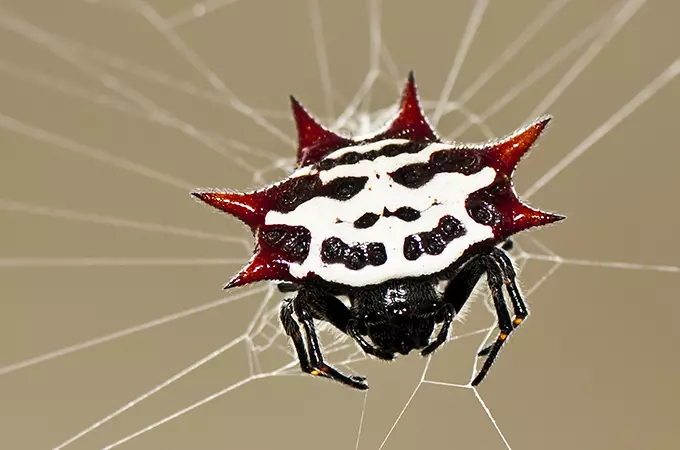
Banana spider: Don’t go bananas if you see a banana spider. Their intense coloring might look intimidating, but they’re not venomous. They have yellow-spotted bodies and black and yellow banded legs. Banana spiders are most commonly found in forests, along trails, and in heavy shrubbery and are not usually found indoors. If you do happen to find one while adventuring outside–leave it alone, it can bite which can leave a painful sting similar to a bee sting.
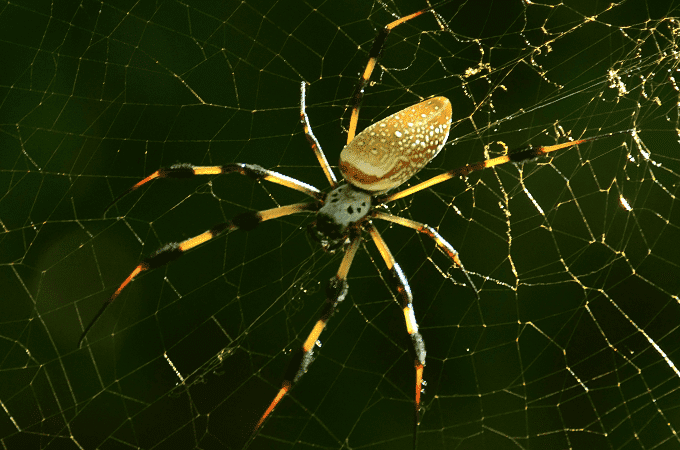
Semi-Dangerous Spiders
It’s unlikely for these spiders to bite, but considering they can be found indoors or around houses, here are three spider species to keep an eye out for.
Huntsman spider: Huntsman spiders, also known as giant crab spiders in Florida, are very large with a leg span of 3-5 inches and brown/tan coloring. Outdoors, they live under tree bark, in woodpiles, and leaf litter, and will come indoors during the winter months seeking warmth. They’ll hide under furniture, behind wall hangings, and in closets and garages. They are very fast runners, using their speed to chase down prey instead of spinning webs. They tend not to be aggressive towards humans and will usually run away rather than bite if threatened. If they do bite, the bites can cause localized pain, swelling, and possibly an allergic reaction, but bites are not life-threatening.
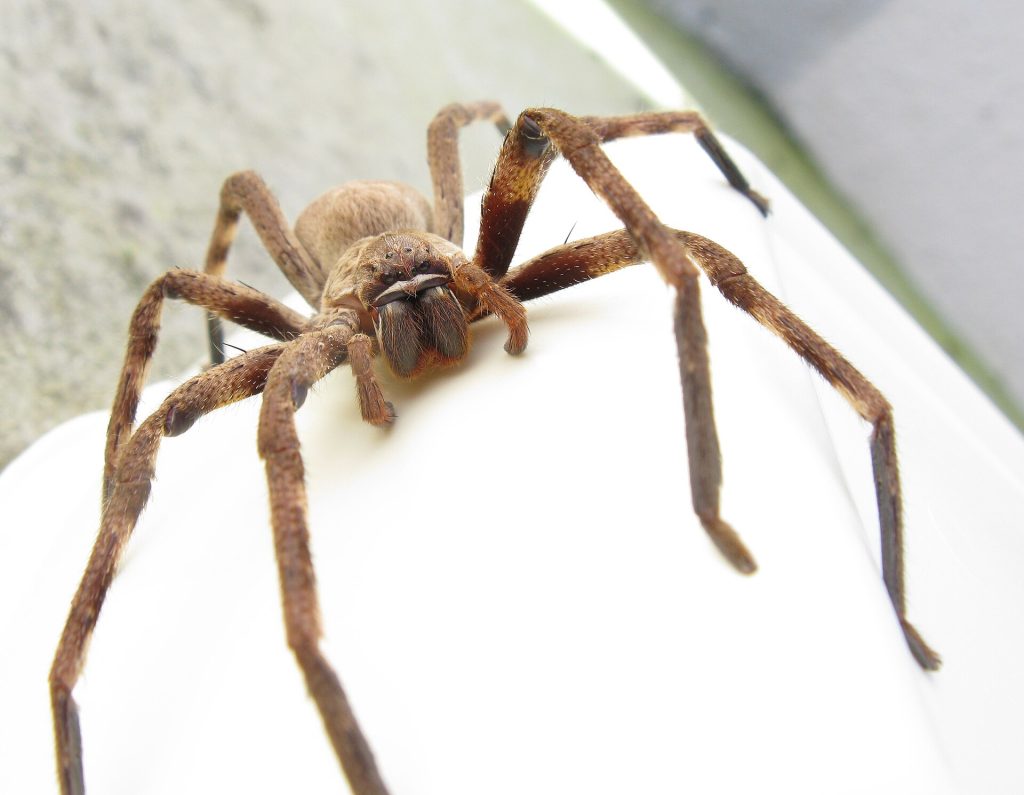
Jumping spider: “Jumping and “spider.” Two words I don’t like paired together, but don’t worry, these spiders aren’t aggressive and bites are rare. Jumping spiders are small, only a few millimeters in length, with a compact body and short legs. Their coloring will depend on the exact species, but they can be multicolored, brown or gray, or black and white striped. Unlike other spiders that are nocturnal, they use their eyesight to hunt during the day and use their jumping ability to actively hunt and pounce on prey instead of using webs. They can be found on surfaces like walls, fences, the exterior of buildings, and around doors and windows.
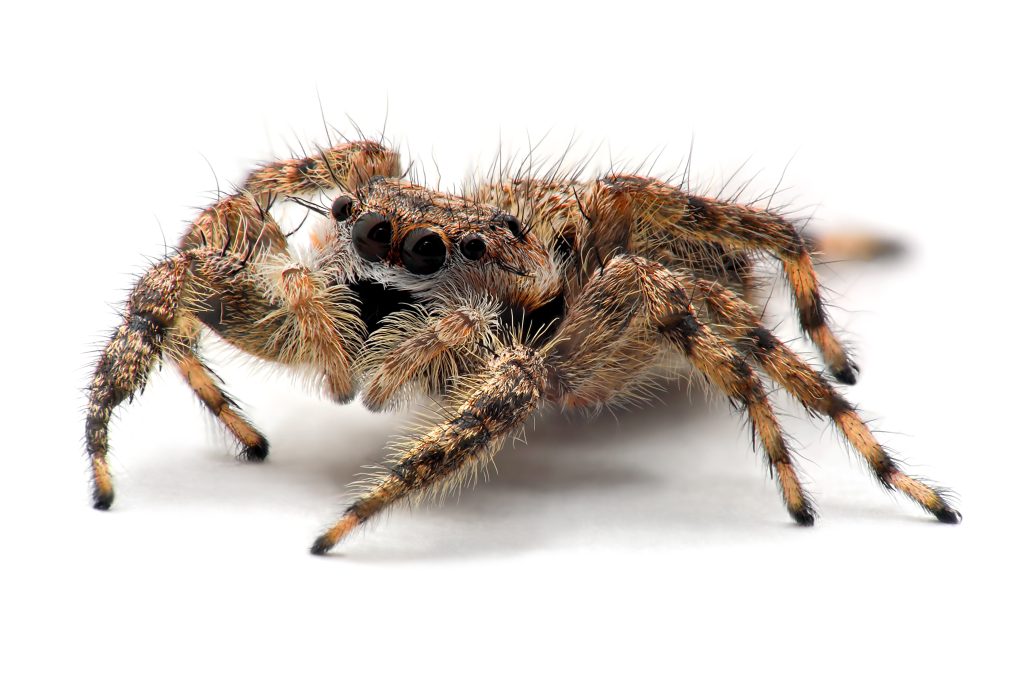
Wolf spider: Wolf spiders may look terrifying, but we promise, they look more dangerous than they really are. The wolf spider is one of the largest spiders in Florida and can grow to the size of grapefruit! They are dark brown, gray, or black in color, and have hairy bodies and long legs built for speed. They thrive in many areas here in Florida including woodlands, grasslands, suburban areas, and beaches. While mostly outdoor spiders, they may occasionally wander into homes through gaps or open doors, especially in fall as the temperature drops. Wolf spiders will only bite if provoked or threatened. The bites can be painful but aren’t considered dangerous in most cases.
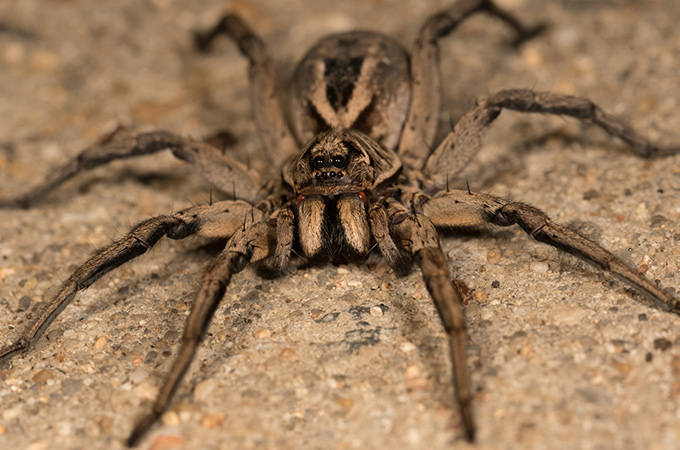
Most Dangerous Spiders
Finally, here are our most harmful spiders here in Florida that have painful bites and reactions. You’ll want to stay clear of these bad boys.
Brown Recluse spider: While brown recluse spiders are one of the most venomous spiders in North America, luckily they’re not native to Florida. Isolated populations of brown recluses have occasionally been discovered in Florida, but these are usually traced back to the spiders hitchhiking their way into the state inside boxes or furniture moving in from other states. If you do happen to be bit by a rogue recluse, ice the area and seek medical attention immediately. Their venomous bites can make the area swollen, red, and tender and can sometimes cause a reaction like fever, chills, dizziness, or rash.
Brown recluses can be mistaken for other common harmless spiders, so look for these characteristics:
- A violin-shaped marking on their back, with the neck of the violin pointing toward the rear of the spider.
- Six eyes arranged in pairs.
- Uniformly colored legs with no bands or spines.
- Body size of around 1/4 to 1/2 inch.

Black widow spider: Finally, we have the iconic black widow. Florida is home to the Southern black widow, the most venomous spider in North America. They are about 1.5 inches in length with a jet-black body, red spots at the tipped end of their abdomen, and a red hourglass marking on their underside. They prefer dark, undisturbed areas near the ground, such as rock piles, wood piles, undersides of patio furniture, garages, sheds, basements, or outhouses. They spin webs to catch their prey. They’re not aggressive, but keep a distance if you see a glint of red from a spider in a web. Their bites are extremely painful and can cause nausea and hypertension. Bites are rarely fatal, but medical attention should be taken right away.
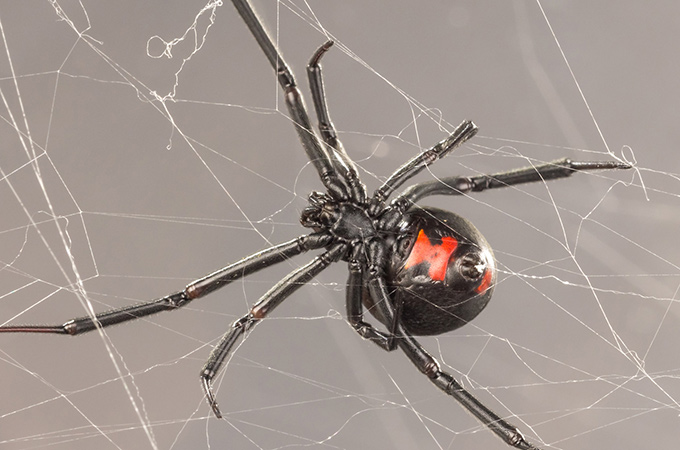
There you have it! Some of the most common spiders found in Florida and their danger levels. Luckily, most of our spiders are fairly harmless. But if these creepy critters are freaking you out, don’t hesitate to call Nozzle Nolen and let us take care of them.




